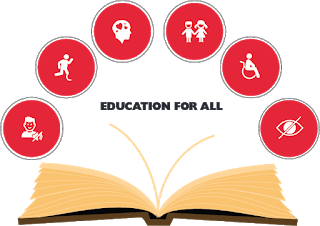By Mahembe Gerald
In Zimbabwe, Inclusive Education has been developed in response to the demand that all children, irrespective of their physical, intellectual, social, emotional, or other conditions, have fair access to education. In order to provide an educational environment that values individual diversity and encourages participation, the policy framework attempts to meet a variety of learning demands. It is imperative to examine the goals, difficulties in implementing, and effects of Zimbabwe’s inclusive education program.
The government of Zimbabwe has ratified a number of international conventions, including the Salamanca Statement on Principles, Policies, and Practices in Special Needs Education and the United Nations Convention on the Rights of Persons with Disabilities, in recognition of the Fundamental Right to Education. These pledges set the stage for the creation of a national inclusive education policy. This policy’s principal goal is to guarantee that all students, especially those from marginalized groups and those with disabilities, have access to high-quality education in mainstream schools. This method tries to improve the learning environment by encouraging diversity and respect among students, in addition to integrating special needs children into mainstream classrooms.
Notwithstanding the inclusive education policy’s well-meaning goals, there are a number of major obstacles to overcome in its implementation. The absence of sufficient resources, such as qualified staff, specialized instructional materials, and easily accessible facilities, is one of the main obstacles. Children with disabilities are either excluded from the educational system or sent to special schools that might not offer the same quality of education as mainstream institutions because many schools, particularly those in rural areas, lack the necessary resources to meet their needs. Furthermore, the shortage of trained teachers who are skilled in inclusive pedagogies exacerbates these challenges, resulting in a gap between policy intentions and practical outcomes.
Social perceptions of inclusion and disability are another important concern. Discrimination and stigmatization of people with disabilities are still common in Zimbabwean society, which has an impact on communities’ and schools’ readiness to adopt inclusive practices as well as the self-esteem of children with disabilities. Due to concerns about bullying or a lack of assistance, many parents are reluctant to send their disabled children to mainstream schools. This cultural barrier makes it difficult for inclusive education policies to be implemented successfully because it scuttles the cooperation that communities, families, and schools require to foster acceptance and understanding.
There have been some encouraging results from the inclusive education program, notwithstanding its varied effects. With more schools implementing inclusive policies and actively working to accommodate students with a range of needs, the educational landscape has gradually changed. Improved academic achievement and social integration among students have been recorded by certain schools, indicating that inclusive education can help peers as well as people with disabilities. The significance of inclusive education has also been brought to light by the advocacy work of numerous community organizations and non-governmental organizations, creating a more accepting atmosphere for children with disabilities.
Despite being based on progressive principles and seeking to establish a more fair educational system, Zimbabwe’s inclusive education strategy is difficult to implement. To fully achieve the promise of inclusive education, it is imperative to address the inequalities in resources, improve teacher preparation, and fight social stigma. Zimbabwe can guarantee that all children, irrespective of their ability, are given the chance to learn, develop, and make significant contributions to their communities by cultivating a more inclusive society.







